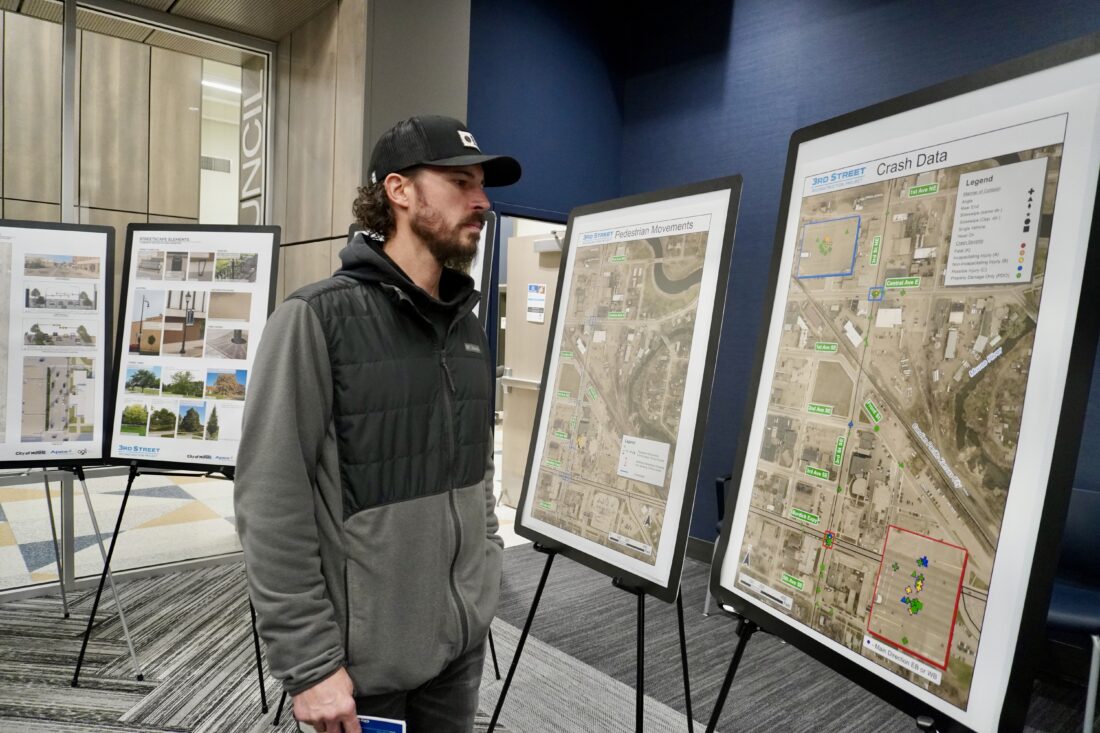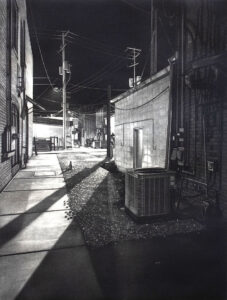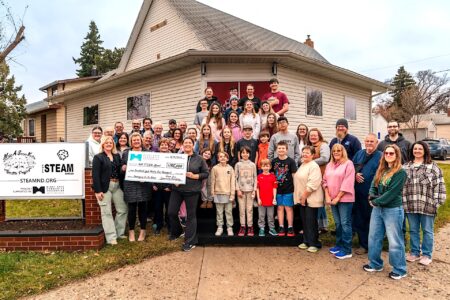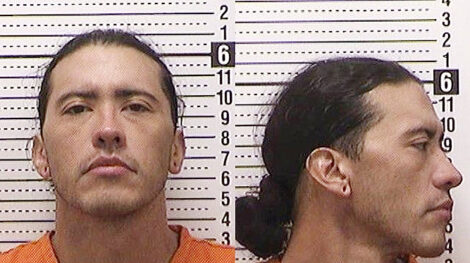Public hears options for Third Street East
Improvements could begin in 2026

Jill Schramm/MDN Nick Holwegner looks over project boards showing various options for reconstruction of Third Street at a public input meeting in Minot City Hall Thursday, Nov. 20.
Engineers laid out alternatives for Third Street East that proposed new lane configurations, pedestrian friendly features and streetscaping at a public input meeting in Minot Thursday, Nov. 20.
The Third Street reconstruction area includes six blocks, from First Avenue Northeast to Fifth Avenue Southeast, and a portion of Central Avenue. Construction would occur in two segments, with the northern segment planned for 2027. The south segment doesn’t have a timeline but is not expected to be constructed until 2029 or beyond, said Matt Kinsella, project manager with Apex Engineering Group.
Features of the project include new concrete pavement and a potential reduction from four lanes to two with a center turn lane, along with storm sewer upgrades, sanitary sewer and watermain replacement, pedestrian signal system replacement and traffic signal modifications. The Third Street Bridge is not part of the project.
“The pavement is really aged beyond its useful life in some areas, and it needs to be replaced. So, that’s the main driver. What that does, though, is it gives us the opportunity to take a look at the whole corridor and evaluate – what’s the street section that makes sense for the next 30 years for this corridor,” Kinsella said. “There’s really an uncomfortable pedestrian environment out there right now. So, we’d be doing it wrong if we didn’t come into a project like this and really try to improve that, and that’s one of the goals of the project.”
Amanda Vetter, traffic engineer with Apex, noted the crash history on the corridor from May 2020 through April 2025 showed 58 crashes. The majority were at intersections, mainly Burdick Expressway and Central Avenue.
Reducing the roadway from four lanes to three would reduce the conflict points in half, and federal studies show a 19-47% reduction in crashes with that type of roadway change, Vetter said.
Engineers also introduced options for Front Street, which angles from Second Avenue at the Minot fire station. The goal would be to address issues of poor traffic visibility and pedestrian safety. One option would create a single roadway, eliminating the current slip lane for right turns and creating opportunities for more public green space where the wedge median exists.
Reconstruction options would bring curb ramps up to current federal standards for disability accessibility. There also are options to add intersection curb extensions for easier pedestrian crossings, widen sidewalks, upgrade the flashing beacon near the Courthouse and add vegetative streetscape features to discourage pedestrian crossings at undesignated crossing points near the county buildings.
Vetter said the Central Avenue intersection signal is not warranted, based on the manual for Uniform Traffic Control Devices. Options for a roundabout or stop signs at Central have drawbacks that make them not ideal, she said.
“With all of this in mind, the city staff is working with the DOT (Department of Transportation) to justify installing a signal here,” Vetter said.
Bryan Leininger, landscape architect with AGL, talked about the need for better aesthetics, noting the lack of trees, lack of screening from large utilitarian spaces such as parking lots and storage areas and lack of definition between roads, railway and private lots. He also noted the city’s pride in its Main Street decorative elements, such as lamp posts, banners and hanging baskets.
“It’s our plan to try and continue some of that level of finish to some degree, so that Third Street at least looks and feels as though it’s part of downtown. So, we’re looking to use some of those same elements and repeat them through Third Street,” Leininger said. “We’re not wanting to compete with the Main Street streetscape. We want to find ways to complement it.”
Kinsella presented preliminary cost estimates, which ranged from $9.45 million to just over $12 million, depending on the alternative, for the north segment. No costs have been investigated at this time for the south segment. No special assessments are planned. A federal grant is available that would cover up to $4.6 million of the cost on the first segment.




